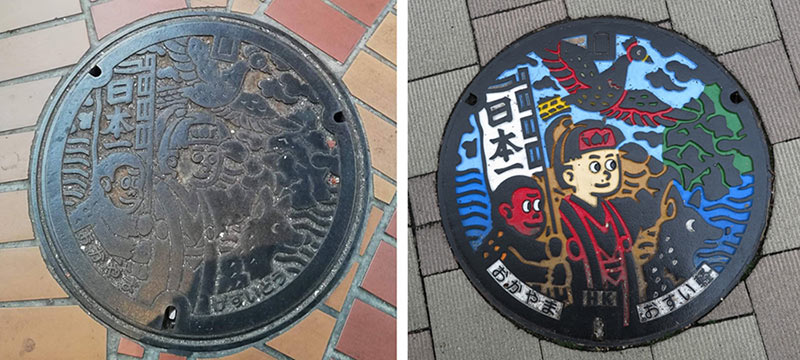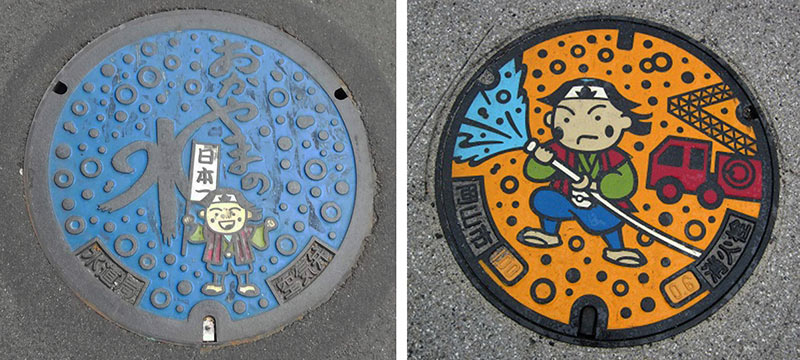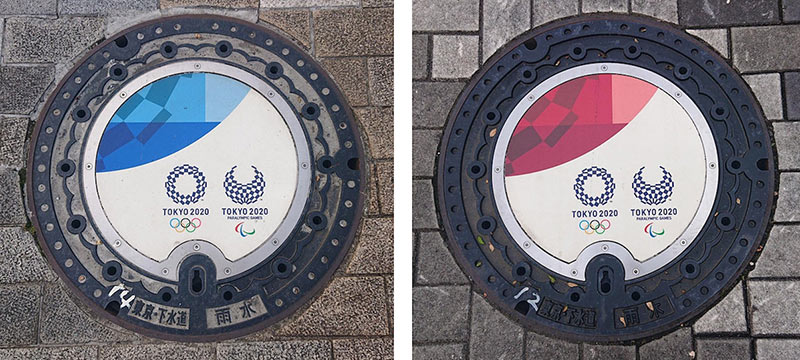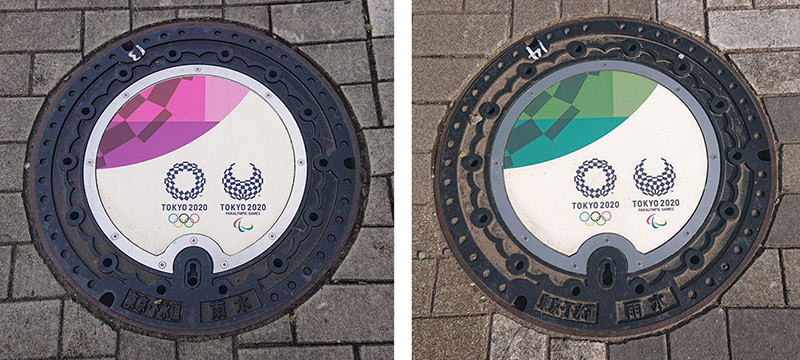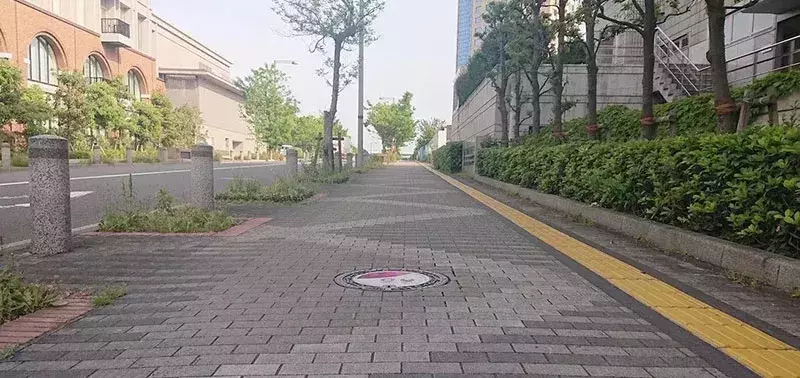
In most cities, the term “street art” brings to mind spray painted murals, cheeky stickers, maybe even a “guerrilla knitting” yarn sculpture wrapped around a lamp-post. But in Japan, street art can be literal. Look down at the sidewalk or roadway itself, and you might just spot a work of art right under your feet in the form of vibrantly designed manhole covers (translated as manhoru). Today, nearly 95% of Japanese municipalities produce their own manhole covers in eye-catching designs that have become a point of pride for even the smallest towns, and a pop culture phenomenon with its own growing fandom. How did the humble manhole cover become a form of street art?
Momotaro manhole covers in Okayama prefecture
Updated manhole cover designs were first introduced as a public relations concept in the 1960s, when many parts of Japan were modernizing their sewage systems. In 1976, Naha, Okinawa, claims to be the first place to install a manhole cover that prioritized graphic illustration, with a design featuring fish “swimming happily”, befitting to this oceanfront city. In the 1980s, the concept spread, especially amongst local governments that wanted to push sewage improvement projects that required taxpayer support. Soon every city wanted their own iconic design to express its unique identity – and to engage in a healthy sense of regional competition. Some designs are based on local landmarks (Osaka City's features Osaka Castle), others draw inspiration from flora and fauna (like a jumping red snapper on western Japan’s Mihonoseki’s, or the cherry blossoms that adorn one of central Tokyo’s many variations). Others include whimsical, cartoon-like mascots (known as yurukyara), such as Hiyoko-chan, a chicken ramen mascot that appears on covers in Ikeda City near Osaka.
Though the covers are a versatile "blank canvas" for creativity, they are all fabricated in a similar fashion - and they have to be built to last. First, scrap steel is melted down in a furnace at temperatures of up to 3000 degrees Celsius. After the impurities are removed, the molten steel is poured into sand-casting molds that imprint the design. Later, after the covers cool down, they're polished, shaved, and trimmed to custom sizes. While many covers remain bare metal, some will be painted with brightly colored resin as commemorative editions before they're shipped off to their final destinations. Once they're installed they'll be hard to steal - they weigh around 50 kilograms or 110 pounds.

Astro Boy manhole covers in Chiyoda-ku, Tokyo, ©Tezuka Productions
A large community of manhole cover fans (sometimes also called "drainspotters" or "manholes") are happy these manholes stay right where they are. Over the past few decades, more and more Japanese nationals, as well as foreign visitors, have caught the manhole "bug". Many even travel the country with the goal of seeing as many as possible, and commemorating their finds creating pencil rubbings called takuhon. Many more fans seek out manhole covers to photograph and share on social media, and there are even now collectible trading cards as another way to "catch them all" in the Pokémon tradition. In 2019, Tokyo hosted the first-ever manhole cover festival, attracting fans from all over to celebrate covers with an exhibition, talks, and a wide array of souvenirs ranging from tee shirts to red bean pancakes imprinted with designs from around the country.
Tokyo 2020 designed manhole covers
In preparation for this summer’s Olympics and Paralympics Games, a special set of twenty Tokyo2020 designed manhole covers have been installed around Tokyo. There are five different designs, each featuring the Games’ logos paired with a different jewel-toned color scheme. While they may be hard to immediately spot among the nearly half-million manhole covers in Tokyo, the city’s Bureau of Sewage has helpfully posted a map online with their locations.
The artistic adaptation of manhole covers in Japan is a perfect example of how to inject beauty and personality into an essential, yet overlooked, piece of urban infrastructure. These bold designs etched on the streets themselves connect art and engineering, and will surely gain new international admiration as athletes from around the globe explore the streets of Tokyo this summer and relay the beauty of Japan’s little known street art to their fans around world.


